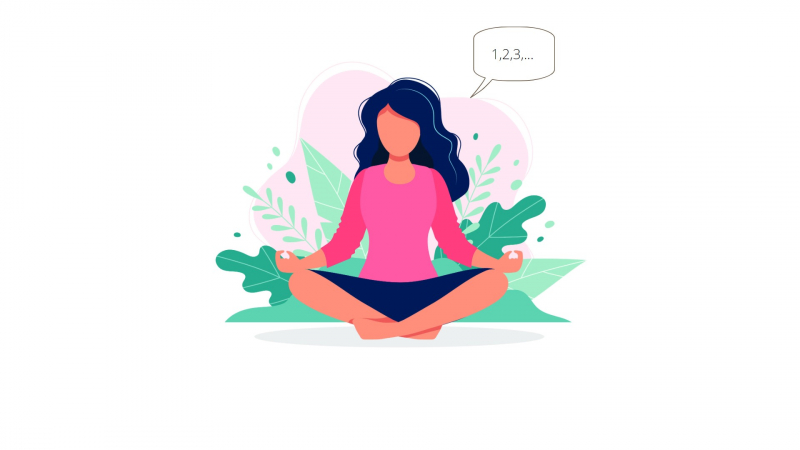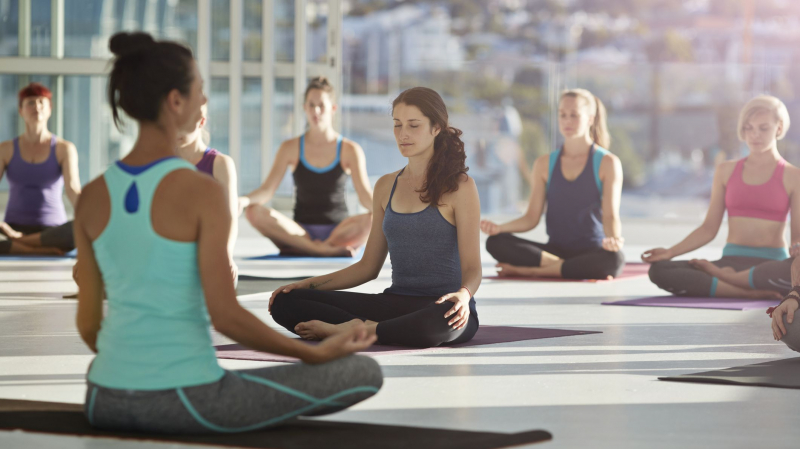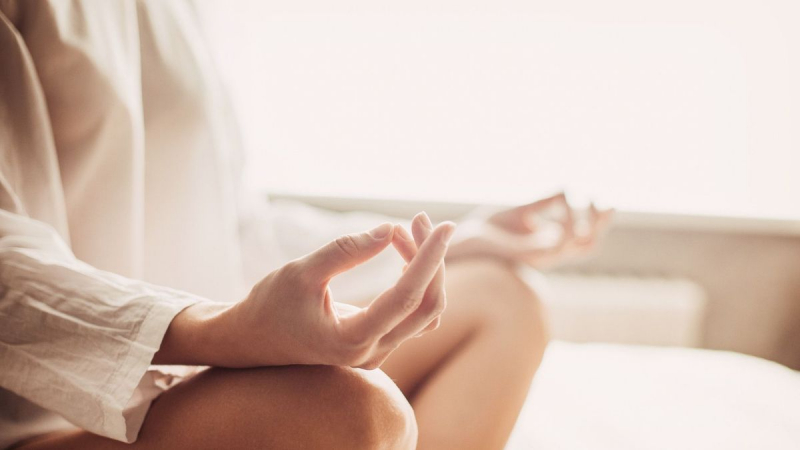Top 5 Helpful Tips to Prevent Your Mind from Wandering in Meditation
Meditation allows us to connect with ourselves, become aware of our feelings, and explore our thoughts. Don't worry if you get repeated thoughts when ... read more...meditating! It's completely normal because our minds are highly active machines. Actually, it might be difficult to keep your thoughts from straying while meditating. It takes a lot of practice and the right strategies to get there. Here are the 5 helpful tips to prevent your mind from wandering in meditation.
-
People who are new to meditation frequently comment on how beneficial the structure of counting the breath is. It is one of the most helpful tips to prevent your mind from wandering in meditation. However, it is not simply a beginner's meditation, but one that can benefit us throughout our lives and help us acquire more focus and clarity.
Focus your attention on your breathing as you inhale and exhale once you're sitting comfortably straight and have removed as many external distractions as possible. Counting breath cycles can be quite beneficial for beginners. At the end of each exhalation, count to ten. For example, count one cycle of inhalation and exhalation as one, the next as two, and so on up to ten cycles. When you've counted to ten, start counting one breath cycle at a time. Don't try to control or time your breathing; simply let it come and go at its own pace. There are no "right" or "wrong" or "appropriate" breathing practices in the sense that you're doing your best to relax and remain aware, one breath at a time, rather than forcing or changing your breathing. Simply be aware of any distracting thoughts you have and return your attention to your breathing.
We will find that we rarely, if ever, reach the number 10 without our minds wandering. This can be unsettling — after all, how difficult can it be to count to ten? The goal of meditation, on the other hand, is to improve our ability to bring our minds back to concentration repeatedly, much like lifting weights in the gym. The trick is not to be irritated with ourselves for not getting it right but to gently and patiently return to counting our breaths.

lifesupportscounselling.com.au Real Simple -
Meditation has been defined as training for your brain. And, while fundamental kinds of meditation can be very simple — for example, focusing on the sensations of your breath for a period of time – really meditating is not always straightforward. This is especially true for novices, therefore using guided meditation can be beneficial.
Aside from silent meditation, another effective method is to use guided meditation. When you are guided by someone's voice and given visualization exercises, your mind is usually preoccupied with the imagery, leaving less space for your thoughts to wander. Although the internet world makes it tough to disconnect, it does have its advantages—finding a guided meditation on demand is easier than ever. Browse through the following options to select the best meditation guide for you:
- Online music services: A subscription to a streaming music service, such as Spotify or Apple Music, can provide you with access to hundreds of guided meditation sessions ranging in length and emotional intensity.
- Podcasts: Whether you want to learn more about meditation or merely want a 15-minute guide, a variety of podcasts offer options for study and practice.
- Websites for mindfulness: A quick search engine search will provide a plethora of websites that provide free guided meditations in both audio and video formats.
- YouTube and other video-sharing sites: If you want to see how others do guided meditation, you can watch a video demonstration. You may get started with guided meditation videos on YouTube and other video websites.
- Yoga studios: If you want to attempt guided meditation in a group setting, look into yoga studios that may have courses dedicated only to the practice.

verywellmind.com Boho Beautiful Yoga -
Visualization Meditation is the activity of imagining oneself doing something and visualizing the results of your actions. It is a mental process that involves reflecting on or picturing how something will turn out before it occurs. Visualization works by teaching your mind to attain success or a specific objective in the future.
There are numerous forms and practices of meditation. One of them is visualization. Some refer to it as the mental rehearsal or mental imagery. Visualization and meditation are not interchangeable because they require utilizing your imagination and mind to control your body. You combine meditation with visualization by imagining something positive throughout your meditation.
To begin, practice simple meditation to relax, calm your mind, and become more sensitive to the outcomes you envision. Find a peaceful place where you will not be disturbed. Place your hands loosely on your lap and sit on a meditation cushion or a chair. Take a few deep, cleansing breaths while closing your eyes. Then resume normal breathing, paying attention to each inhalation and expiration. Simply watch your breathing for a few minutes, returning to it whenever your mind wanders. You can begin the visualization exercise once you feel comfortable and less distracted by your thoughts.
As one of the helpful tips to prevent your mind from wandering in meditation, visualizing precise details related to the larger picture in your mind necessitates requires your brain muscles' activity and concentration.

zenlounge.in Fearless Soul -
If you have a lot on your mind, writing your thoughts before meditating can be a beneficial solution. Write down all of your thoughts as they occur to you, without analyzing them or pausing to consider whether you're doing anything perfectly. Simply jot everything down on paper until you feel relieved. Take a few cleansing, deep breaths, and prepare to meditate. Your thoughts should now be a lot clearer.
First, get some energy going by doing yoga poses, stretching, jumping about, shaking, making noise—anything that allows you to connect with your body and create a physical and emotional space conducive to meditation and journaling. Once the energy has been awakened, sit in a comfortable position with your spine tall, your eyes closed, or your gaze gentle. Concentrate on your breathing as you allow the accumulated energy to settle and ground. Allow yourself to be open to all sensations. Then, from a place of spaciousness, express yourself, allowing your journaling to be organic and intuitive. It might be freestyle—writing without direction or filter—or using a term or phrase that resonates with you as a launching pad. After you've finished journaling, take a break and then return to meditation. Take note of the thoughts and feelings that develop as a result of your journaling. Allow things to wash over you without judging or attaching yourself to them.

yogapedia.com 
cnn.com -
Meditating at the same time every day and in the same location ensures that your mind is prepared and at rest. Because the mind is not trained to be still, it will resist any abrupt order to cease doing what it naturally does. Therefore, maintaining a regular practice can be one of the helpful tips to prevent your mind from wandering in meditation.
Only by consistent practice can we train the mind to be more still and to allow more space between thoughts. It is critical to begin with modest meditation periods and gradually increase them, with patience and kindness toward yourself.
If possible, try to meditate first thing in the morning. This will ensure that it is completed and will alleviate any sleepiness, putting you on pace for a mindful day. If meditating in the morning isn't your thing, make it a priority. Remind yourself that nothing is more vital than your mental wellness. Thinking about 'the same time, same location' will help you fully integrate this new practice.
It may be beneficial to connect your meditation to another well-established daily routine, such as brushing your teeth. Consider 'brushing teeth and then meditation' or meditation and then coffee.' You will be incorporating your meditation practice into a well-established habit by doing so.
Be prepared to be flexible with your practice - not every day will be the same, which may necessitate moving your meditation to a different location, time, etc. Don't use this as an excuse to avoid it entirely. and try not to overthink your meditation. There is a propensity to believe that you are "terrible" or "excellent" at meditation. There is no such thing in reality. This will never be an issue if you grasp the long-term goal of your practice.

liveuttarpradesh.com 
doctissimo.fr


























